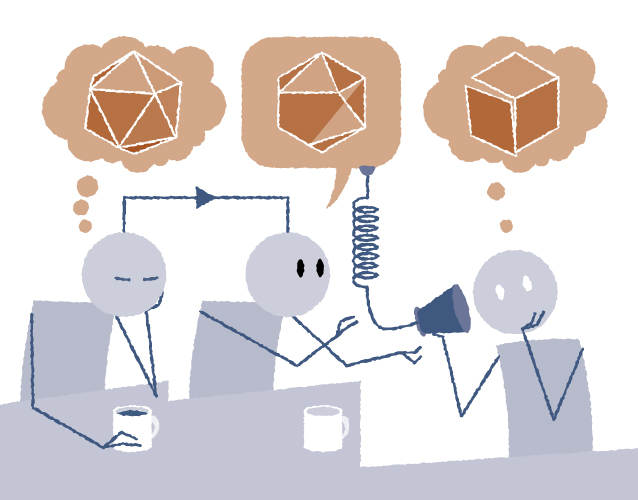Freewriting Works. So Why is it a Tough Sell?
I’ve been teaching the technique of freewriting to high school students for a dozen years. Peter Elbow invented it. Buy and read his book, Writing without Teachers.
The theory in a nutshell is this: you can more efficiently clarify your thinking, invent thesis statements, or whatever, if you warm up your brain by writing some garbage. It works. I did it to develop the idea for this article.
But as a teacher, you can’t just jump in and say, “freewrite for ten minutes, class.” You’ve got to sell it.
Sometimes, for instance, I pitch it with a little pop neuroscience:
You see, most of your waking life, your brain is in this beta-wave state. Society wants us that way: goal oriented, interpreting inputs, making decisions. Task-oriented. Navigating the maze. Freewriting helps us to get out of that mental mode, and into a theta-wave brain state. This is the state of flow–where you’re not actively “thinking,” just letting your brain go where it wants, daydreaming, not self-conscious, not judging or evaluating or making decisions. You can’t effectively create in the beta-wave state; you need to shift gears into the theta-wave state. Freewriting gets us there by forcing us not to judge the garbage we’re writing.
Then I tell them the rules:
You can write about anything, everything, nothing. It doesn’t matter. What matters is that you write. Keep writing and don’t stop. Don’t stop to think about what to write, or what word to use. Just write. Trust your brain, something will come out. Don’t stop. That’s the first rule. The second is don’t edit. Don’t cross out a word, don’t erase. Leave the mistake and move on. I know that will be very hard for some of you. But try your best to accept the imperfections and move on immediately.
“So…what are we supposed to be writing about?”
Someone asks that literally every time. “Don’t write about anything,” I tend to say. “Just write. Write to write. Keep the pencil or cursor moving.”
And this, I’ve noticed, is where I start to lose them.
Why Can’t I Sell My Students on Freewriting?
I’m the one wielding the grade book, so they do what they’re told. (Except the rebels, who have a special place in my heart.) I put the timer on for five or seven or ten minutes, and they write drivel. Beautiful, awful, failure-piles of words. I tell them this is great. They don’t believe me. They’d rather write five-paragraph essays.

In fact, my students, over the years, have reacted to freewriting in a variety of ways. A few adopt it, and continue using it independently. (Success!) A good chunk say “wow, it was therapeutic,” or “I liked that I could write about whatever I wanted.” But then never use it on their own.
The vast majority, though, just sort of humor me. I can tell they are uncomfortable. Like I’m asking them to sense the extra-dimensional vibrations emanating from a quartz crystal. “Just hold your palm open over the crystal, and you’ll feel it. Be patient and open your mind.”
Many of these students, I suspect, sense that freewriting works. But like limiting your calories and exercising, freewriting is just something we’d rather not do.
And then there’s a few that hate it, and insist it’s nonsense.
For me, as a writing teacher, the persistent question is this: Why can’t I convince them to adopt freewriting as a go-to method? What am I doing wrong? Why can’t I sell them on it?
Committing to Freewriting is Hard.
That’s the simple answer. I know it’s true, because I can’t even commit to it. I should do it every day. But I don’t. I should have my students do it at least once a week in class. But I don’t. If I can’t commit to it, why should I expect them to?
I want to commit. It would make me a better writer and teacher. I could infect students with my enthusiasm.
A part of me thinks I would be a better writing teacher if all I did was train my students as freewriters. They’ll have other teachers for things like organization and thesis statements. I could just spend the year freewriting with them, and it would make such a difference.
Not practical, I know. But a part of me, deep down in my heart, believes this.
There has to be a middle ground. But it has to start with convincing them the strategy has value in the first place.
Expressionism is Slippery.
Let’s say my students and I were willing and able to give freewriting our full commitment. There’s still a more fundamental problem. Expressionism, as an epistemological framework for writing instruction, is just too damn slippery.
Lemme ’splain.
Expressionist epistemology is a set of beliefs about how we know. An expressionist believes that any concept, lets call it a Capital-T Truth, is knowable by Person A. Furthermore, that Truth is eternal and unchanging, not subjective at all. Person A can, through deduction and/or observation, discover that Truth, and know it.
But if Person A tries to explain that Truth to Person B, things go awry. Language, to the expressionist, is just not up to the task. The best we can hope for is an approximation.
This is why expressionists rely so heavily on metaphors. Metaphors ground the abstract in concrete human experience. If I say, like Peter Elbow, that freewriting is like cooking, that metaphor can better approximate the concept. The inevitably distorted version of the idea received by Person B is a tad better. A tad closer to the truth.

Don’t Chase the Bird.
So, yeah. Peter Elbow’s book has a very expressionist lean. It’s a great book; it’s had an enormous impact on my life, my writing, my teaching. But because Elbow can’t seem to be express the truth of freewriting without metaphor, my own concept of it is very slippery.
So I’ve had no end of trouble teaching it. I can approximate, but I can never quite get at the truth of why it works.
One of my best attempts was this koan-like metaphor:
Imagine you are trying to catch a bird. If you chase after it, you’ll never succeed, because the bird can fly and you can’t. Every time you go after it, it will just fly to the next branch. It will always be out of reach–because you are chasing it. So instead, here’s how to catch the bird. Stand quietly in the forest. Stretch out your hand, so it looks like a perch. Wait. It might take a long time, and you’ll have to be very patient. But eventually, the bird will decide to settle in your hand.
Something might have clicked in the brain of a student or two. But for the most part, “don’t chase the bird” just became an in-joke among my students.
Failing My Way to an Answer.
In twelve years, I haven’t been able to answer the question. “Why can’t I sell my students on freewriting?” I forgot, I guess, not to chase the bird.
An answer did finally come to me, though. When I wasn’t chasing it, of course. I was drafting a detective story.
The story itself, currently in its second draft, is a failure. Beta readers say it’s a fun read, but on a deep structural level, it needs work.
I wrote it to learn, though. Detective fiction isn’t a genre I’m comfortable in. But you can’t get good at it without failing a few times. so I’m happy with how that’s going.
Here’s what I did. I watched a few YouTube videos. Took notes. I read a short story by Larry Niven, called “Neutron Star,” and analyzed its pacing and structure. I took LOTS of notes. Then I connected what I learned there with David Baboulene’s concept of the “knowledge gap.”
I had an “Aha!” moment. Baboulene talks about how the tension in a story should boil down to a question. “Will Marty McFly make it back to 1985?” The desire for the answer propels the reader forward. Good writing focuses the reader on one question at a time.
After analyzing Niven’s story, and thinking about Baden-Riess’s comments on red herrings, I realized something. The heart of the mystery structure is getting your reader to ask the wrong question.
Mystery fiction’s cardinal rule is that all the information necessary to solve the mystery must be available to the reader. However, you try to prevent the reader from seeing the solution before the end. How? By keeping them focused on the wrong question.
Of course, my story still needs work. But this insight about “wrong questions” immediately transferred over to my freewriting conundrum.
Writing is like Solving a Mystery.
Like detective stories, the writing process is about trying to solve a puzzle. Instead of “Who’s the killer?” we’re asking, “What am I trying to say? And what’s the best way to say it?”
Maybe it’s human nature. Maybe it’s our society’s focus on maintaining beta-wave brain states. Or we all just learned the wrong lessons in school. But when we are trying to write, we’re unlikely to operate like the detective in a mystery story.
We’re more likely to behave like the supporting characters. We try to take shortcuts, and arrive at the wrong solution. We hide things from ourselves, and it takes forever to realize what we’ve been trying to say all along.
I think it all boils down to one wrong question.
Remember what I’m always asked by my students? Freewrite, I say. Go. Then someone asks, “But what are we supposed to write about?”
As I said in the beginning, this is where I lose them. Because I don’t have a satisfactory answer. But now I know why: because it’s the wrong question.
It’s a red herring. Think about that for a moment. Giving your students a topic and asking them to choose a position and support it — this is standard fare in the classroom. But the topic you are giving them is like a red herring. It leads the students to a false solution: some idea that the teacher wants them to express, or society wants them to express.
But true writing, true formulation and expression of ideas, takes something more.
Can I Teach Writers to Think like Detectives?
So, I haven’t yet escaped from the slippery realm of metaphors. But I may have gotten closer to the truth. And through appealing to the metaphor of detective fiction, I may be able to better sell freewriting.
“What are we supposed to write about?”
When they ask next time, maybe I’ll answer this:
“I could give you a topic, but I think you can find one on your own.”
Or, I could tell them this: “What does the teacher want me to write about?” is the wrong question; the correct question is, “What do I want to write about?”
It’s worth a try.